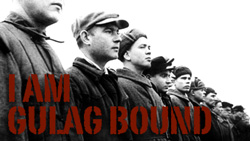By: Julia Gorin
Right Side News
If nationalists win an election in Serbia, it follows that there will be an article in The Washington Times by the paper’s resident Croatian-supremacist Jeffrey T. Kuhner. And so there was, as usual angling for a new war against Serbia – by making the argument that Serbia wants it. (“Did Serbia Vote for War: New ultranationalist president promotes instability” – May 24)
“Mr. Nikolic’s victory means the Balkans may be plunged into ethnic violence again,” Kuhner writes.

Thanks for that NGO/State Department stock sentence. As if it’s not violence while only Serbs (and Roma) are being picked off (in Serbia’s Kosovo) or targeted for war crimes prosecution, which becomes persecution.
Kuhner continues, “The 60-year-old former cemetery manager is a neo-fascist, who wants to restore a ‘Great Serbia.’”
That Greater Serbia project that didn’t exist last time and doesn’t exist this time, and which was reluctantly but repeatedly disproved at the Serb-hostile Hague. Either there aren’t any fact-checkers at The Times, or Balkans facts are still expendable in America. Kuhner, who has internalized the truly fascist-spun version of the 1990s Balkans, brandishes the “neo-fascist” label that is so popular to use against Serbs. This from a champion of the nation that still reminisces about its Hitler-bestowed Independent State of Croatia, and still holds Mass for its fuehrer Ante Pavelic.
Nor is Kuhner concerned with the Albanian nationalism which not only started a NATO-assisted terrorist insurgency to wrest 15% of Serbian land (is it “nationalist” to have a problem with that?), but which also employed organ-harvesting, jihad, and human- and drug-trafficking in its service. He likewise isn’t bothered by the fundamentalist Muslim president of Bosnia who insisted on war to begin with. No, Kuhner wants to keep readers eternally fixed on Serbs. This is a man with a chip on his shoulder, and he’s weighing his paper down with him.
In time for Memorial Day Weekend, Kuhner gave a slap in the face to thousands of WWII vets, tracing Serbianationalism™ to “Drazen” (sic: Draza) Mihailovich and his Chetniks, the royalist guerrillas who fought not only the Nazis, but also the Communists (Tito’s Partisans were simultaneously working for Soviet domination of the region). It’s something for which Ronald Reagan singled Serbian heroism out and for which President Truman bestowed a posthumous Legion of Merit upon Mihailovich. (“The ultimate tragedy of Draza Mihailovich cannot erase the memory of his heroic and often lonely struggle against the twin tyrannies that afflicted his people, Nazism and Communism.” — Gov. Ronald Reagan, 1979)
It was articles like Kuhner’s, calling the Serbs and Chetniks “racist” and “far-right” — inverting the documented, Axis-aligned fascism and continuing supremacy of Croats, Albanians and Bosniaks — that were so hard for American WWII vets like the aging Chetnik-rescued Richard Felman to take in the 90s, when the West was angling for the next betrayal of the Serbs. He was aghast to see Axis propaganda being printed in American newspapers at the turn of the millennium. And here we are more than a decade past, still repeating it.

Richard L. Felman U.S.A.F.
Kuhner has the Chetniks “slaughtering tens of thousands of Bosnian Muslims, Croatians and Kosovar Albanians.” As any Jewish library can show, one-third of Croatia’s Serb population was liquidated by the Croatians’ Hitler-aligned Ustasha regime which Kuhner is covering for with his inversions; and Kosovo Serbs (plus 400 Jews) were rounded up by those “Kosovar Albanians”, who also fought the Partisans, in their fez-capped Nazi uniforms.
I won’t go into Jewish Holocaust survivor Cadik Dannon’s experience with a Bosnian Muslim working at a Croatian concentration camp, but suffice it to say that it wasn’t the Croats, Albanians, or Bosniaks whom the Germans had to threaten to kill by the hundred for every dead German soldier; it was the Serbs. And this of course affected the attack plans of Mihailovich’s Chetniks. An obscure term to Americans, which the writer hisses like a true partisan of one of the sides in the Balkan wars. (WARNING: BELOW FILM DEPICTS EXECUTIONS NOT SUITABLE FOR ALL AUDIENCES)

50th Anniversary Celebration of the Halyard Mission
Chicago, IL May 1994
Left to right: Rescued Airmen Milton Friend,
Norman Reid, Richard Felman, saluting, and
OSS Chief of the Mission, Major George Vujnovich
Photo by Aleksandra Rebic
By equating the recently victorious Serbian Radical Party with “Mihailovich’s Chetniks,” Kuhner elevates the object of his derision.
That he means to do the opposite at Mihailovich’s expense the very month that Congress yet again praised Mihailovich and his Chetniks for helping execute the largest air rescue in American combat history (and two days after Bronze Star recipient George Vujnovich was inducted into the New York Senate Veterans’ Hall of Fame for coordinating it), should have readers asking why The Times is allowing itself to be used as a mouthpiece, and lowered to the level of the Islamic and Nazi-heir propaganda websites where this ‘information’ comes from.
NOTE: Article Continues below Videos and Photos
Halyard Mission – Documentary Film
Local Ohio newscast interviewing surviving airmen

Final Evacuation of Allied Airmen from Yugoslavia, December 27, 1944. Standing far right is Major George Vujnovich, OSS Chief of the Halyard Mission. Also pictured is Captain Nick Lalich, standing centerin bomber jacket, and Arthur “Jibby” Jibilian, center,kneeling in front of Lalich,both of the OSS, and both integral to the epic successful Halyard evacuations. (Courtesy of Aleksandra Rebic)

The late Major George Vujnovich of the 1944 Halyard Mission revisits Pranjane, Serbia in September of 2004
Photo courtesy of OSS Radioman Arthur “Jibby” Jibilian

Lt. Col. Milton Friend, USAF, back home in the U.S.A. in 1944 after being rescued by the successful Halyard Mission operation in Serbia.. In 2010 he returned to Serbia to testify in the Mihailovich rehabilitation proceedings.
“Mr. Nikolic embodies the worst forms of Serbian nationalism, whose ideological roots go back to the ‘Chetniks’ – the term for Serbian royalists – of World War II. Led by Drazen Mihailovich, the Chetniks formed a racist far-right-wing movement that sought to forge an ethnically pure Great Serb empire incorporating Serbia, Montenegro, Kosovo,Macedonia, most of Bosnia and large chunks of Croatia. Allied to Benito Mussolini’s fascist Italy, the Chetniks engaged in murderous ethnic cleansing, slaughtering tens of thousands of Bosnian Muslims, Croatians and Kosovar Albanians.”
Almost every drop of the preceding paragraph is written in reverse of actual events, as the reams of documentation (including Jewish documentation) of WWII Balkans attest. Sir Alexander Glen, British Naval Attache in Belgrade during the war, wrote the following about Mihailovich in a letter: “…I found him broad in his understanding, with loyalty to the whole of Yugoslavia and not to a narrow Serb hegemony.” Lt. Col. Robert H. McDowell, who headed the 1944 U.S. intelligence mission to Mihailovich, told author David Martin of Father Sava Bozic, “a venerable Orthodox priest who commanded a large Mihilovich formation in western Bosnia in which Serbs, Croats and Moslems served harmoniously together.”
Both the Partisans and Chetniks dealt with the Italians and Germans in between fighting them, depending on what arrangements eventually became necessary, each ganging up with the Fascists at least once against the other, as the Chetniks found themselves simultaneously under attack from the Communists in Tito’s power struggle.
But the Partisans (and the Fascists) made sure that the Allies — and history — would remember it only one way, and in the most nefarious-possible context. Which is the way Kuhner continues to propagate it. Just to give a small sense of the intricacies of what has been simplistically construed as “Chetnik collaboration” with the Fascists (again, a laughable decoy given Croatia’s opportunist, Hitler-aligned clerical-fascist bloodbath in contrast to the Serbs’ multiple, suicidal attempts to fight the Nazis including a national revolt against Serbia’s first would-be collaborationist regime), below is an excerpt from the 1990 book The Rape of Serbia, by WWII British Liaison Officer, Captain Michael Lees:
After the decision [to withdraw support from Mihailovich] was made, it had to be justified. Mihailovich, the patriot and hero of 1941 and 1942, was first portrayed as ineffective, then as a collaborator. The communists provided ‘evidence’ of Loyalist peccadilloes while concealing their own flagrant, large-scale strategic collaboration with the Germans.
Only a month before the first British mission team had contacted them, three leading members of the Tito clique spent some weeks wining and dining the Germans in Sarajevo [Bosnia] and Zagreb [Croatia]. The two sides had agreed on a truce to enable the communists to concentrate on the critical civil-war battle against the Chetnik Loyalists on the Neretva River. In addition to the truce, the negotiators had discussed a strategic long-term plan whereby the Germans would help Tito to establish a free zone in the Sandzak Mountains…which was a Loyalist stronghold, in exchange for Partisan support against the expected Allied landing on the coast of Dalmatia. This plan was vetoed by Hitler personally.
These sorts of things were known to Washington in decades past. Speaking before Congress in November 1987, then Illinois Congressman Philip Crane said, “In the autumn of 1941, the so-called Partisans – Yugoslav Communists – ceased cooperation in resisting the Nazis and began attacking the Mihailovich forces from the rear.”
And from a July 19, 1946 editorial in Britain’s Whitehall News:
The main accusation against Mihailovich…was that after an initial period of great activity, he withdrew into the Serbian mountains and remained there comparatively passive. This was the basis of accusing him of “collaborationism.” …[But] the price of mass executions carried out by the Germans in retaliation [was] much too high for the actual results he could achieve. He was confirmed in this attitude when, after Teheran, the Allies gave up the plan of invading the Balkans.
Tito, on the other hand, was never a free agent; he was consistently carrying out the directives of Soviet policy in the Balkans, and so, was never hampered by patriotic scruples. Thus, he could wage the Partisan war, disregarding the bloody reprisals taken by the Germans on the civilian population.
The above context is in addition to the fact that not only were Tito’s Partisans taking credit for Chetnik victories against the Germans, and through communist spies in London were misreporting to Churchill that Mihailovic was a Nazi collaborator (leading to what Churchill called his biggest WWII mistake), but just as some Croatian fascists donned Partisan uniforms to save their skins toward the end, so was there a sort of corollary wherein some Chetniks ran for their lives from marauding Partisans, alongside retreating Nazis. Nor were they necessarily “Mihailovich’s Chetniks,” though there were some. But the game is to paint all ‘chetniks’ (i.e. guerrillas) in a monolithic way so as to lump Mihailovich and his men — the saviors of hundreds of American pilots — in with guerrilla factions and individuals who may have had more to do with the Germans. It’s an attempt as brazen as it is insidious, given that (to offer just one factoid) a top Mihailovich commander fell out with Mihailovich because the former wanted to “assist the Germans against the Partisans, a course of action Mihailovich refused to contemplate.”
The fact that Truman gave Mihailovich the Legion of Merit award after the Communists executed him for “collaborating with the Nazis” tells researcher Andy Wilcoxson that President Truman “didn’t put any stock in the allegations of Nazi collaboration, which he was certainly aware of when he decided to give him the award because the allegations were all over the media by then,” he wrote, adding, “If you go to a library and search the microfilms of American newspapers for stories mentioning Chetniks during World War II, especially 1941 and 1942, it was reported at the time that the Chetniks were leading the rebellion against the Ustasha and Nazi occupation forces in Serbia.”
It’s a view consistent with that of Ruth Mitchell, sister of U.S. Air Force conceiver Gen. Billy Mitchell and author of the 1943 book The Serbs Choose War, in which she wrote, “The Serbs rose. A little race of not more than 8 million souls deliberately, sternly decided to die rather than submit to Axis vassalage. They were the only small race of Europe to come in openly on the side of the Allies before they were themselves attacked and while they still had the promise of complete security of frontiers, of lives, and of property.”
“No wonder nationalists celebrated [Tomislav Nikolic’s] victory, unfurling Chetnik flags and symbols,” continues Kuhner. Yes, take it from someone who has no problem with the chilling symbol of Croatian purity that is the checkered flag of Croatia, resuscitated during that country’s 1990s re-embrace of fascism, complete with Nazi and Ustasha (Croatian-Nazi) symbolism and street names.
To see the regional term “Chetnik” — intended by most of its modern users as an anti-Serb slur — dripping from an American newspaper is surreal indeed. It’s an obscure, esoteric term virtually unknown to today’s Americans (who hardly even know what a Serb is except that it’s bad); a term which hasn’t really even entered the language lexicon — yet there it is in The Washington Times. With a definition thoughtfully provided for you. The only definition you need to trouble yourself with if you know what’s good for you: the one propagated by an unholy alliance of Fascists, Communists and Islamists (and originated by those who allied with the Germans to begin with). Again, it’s a testament to what can happen when someone from one of the warring sides implants himself at an American news outlet, think tank, business, film studio, institution or government office (see Capitol Hill in the 90s).
A term that general media are hardly familiar with is being vomited from the pages of The Washington Times, all because a speared tail wags a dog that’s obliviously allowing itself to be used as a mouthpiece–by someone who’s got a horse in a foreign race. It’s the cherry on top of the complete graft we’ve transplanted onto ourselves of the distant ethnic rivalries from, of all places, the utterly blocked-out and unsorted-out-by-Americans region called the Balkans. We don’t even realize we’re engaging in the kind of ethnic bias that runs so counter to what we fancy our values to be, still believing that here is where ethnic rivalries are left at the border.
Kuhner doesn’t even bother with the veneer of accuracy for the paper’s sake, using the obsolete figure of “250,000” killed in the Balkan wars. Even if, to the 100,000 killed on all sides in Bosnia, you add the 20,000 in Croatia and the 2,000 in Kosovo before the NATO bombs and the 5,000 after, that still leaves us under 130,000. The mainstream media long ago, if imperfectly, corrected themselves on this, but here we have the generally more honest Times still latched onto the inflated propaganda figures that came from the MSM in the first place. Considering how widely cited the more accurate figures have been, including the very week before Kuhner’s article ran (upon the opening of the Mladic trial), one can only deduce a profound professional ignorance on Kuhner’s part, or an even more profound hatred. How else does one explain the right-leaning Kuhner continuing to propagate Amanpourite “facts”?
He further continues to peddle the debunked German-Bulgarian-cooked hoax about there being a Serbian plan to “annihilate ethnic Albanians in Kosovo,” referring to “Belgrade’s genocidal project,” which Hague prosecutors were at a loss to demonstrate. That he uses the term “final solution” to describe it is offensive, including to the memory of reporter Daniel Pearl, who in his December 1999 article found that the Serbs were engaging in nothing of the sort. Kuhner must have also missed the scores of other articles like it appearing in virtually every newspaper at the time, though they all subsequently opted for the original fiction over the findings. (I’d thought The Washington Times to be better.)
“Mr. Nikolic has not abandoned the dream of a Greater Serbia,” Kuhner continues. Never mind about the actualized “dream of a Kosovo without Serbs” as part of the now openly admitted Greater Albania project. “He claims, however, that he wants to achieve it ‘peacefully,’” Kuhner mocks, though that’s more than can be said of the Albanian terrorists who took Kosovo, with mujahedeen help and ours. To brazenly fly in the face of observable facts on the ground, namely a Kosovo almost devoid of non-Albanians (as per the original stated Albanian goals) takes a personality type that’s entirely alien to me. As does the hubris that enables one to recklessly abuse a prominent podium such as The Washington Times.
Kuhner makes sure to specify that Belgrade “launched” brutal wars “of aggression.” This is so readers have no idea these were actually defensive wars that neither the Bosnian nor the Croatian Serbs wanted, let alone Belgrade. “I don’t know if he is a war criminal,” Canadian former ambassador James Bissett said of Radovan Karadzic in 2008. “But I do know he did his damnedest to prevent the war.”
Kuhner also mentions Serb units in Croatia engaging “in systematic murder and destruction,” for he knows it’s unlikely readers will ever hear from the muzzled UN soldiers who are still in therapy over the crimes they witnessed by Croatian troops against Serbs. The body of one charred teenage girl was still smoking when Canadian troops found her.
The Times should be ashamed, but it doesn’t know enough to be. And it cares even less.

Julia Gorin is an opinion columnist with a focus on the Balkans. Her articles have appeared in Jerusalem Post, Wall St. Journal, NY Times, Los Angeles Times, Washington Post, NY Post, Washington Times, New York Observer, Christian Science Monitor, American Legion Magazine, and scores of others. She blogs at www.RepublicanRiot.com. When not trying to set the record straight on self-destructive Western interventions in the former Yugoslavia, Julia is a recognized name in conservative comedy.







Obama Demands Court Uphold His “Right” To Ignore Constitution
http://www.westernjournalism.com/obama-demands-court-uphold-his-right-to-ignore-constitution/